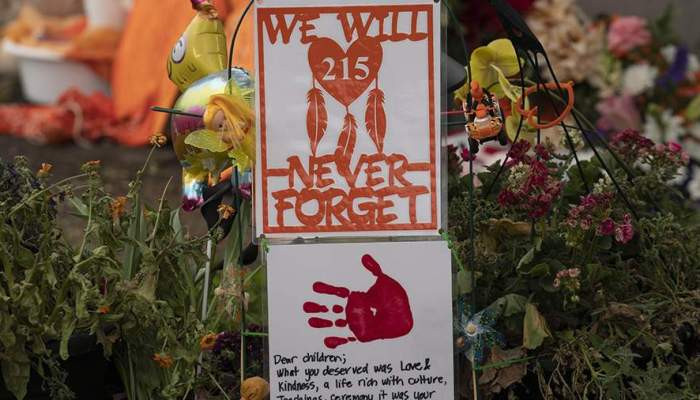+24 °C, +13 °C ... +24 °C Tomorrow:+24 °C

A Saskatchewan First Nation says it has made the “horrific and shocking discovery” of hundreds of unmarked graves — many believed to be children — near a former residential school, with a total expected to be over three times higher than the 215 discovered recently in Kamloops, B.C., according to a source briefed on the file. Leaders of the Cowessess First Nation, a roughly two hour drive east of Regina, are expected to reveal details of the macabre discovery near what was once the Marieval Indian Residential School during a press conference Thursday morning, as well as the latest count of newly-identified remains. “The number of unmarked graves will be the most significantly substantial to date in Canada,” says an advisory published Wednesday evening by the Federation of Sovereign Indigenous Nations, which represents 74 First Nations in Saskatchewan. The remains are in unmarked graves in a communal gravesite first used in 1885 but eventually taken over by the Marieval Indian Residential School, founded and operated by the Roman Catholic Church beginning in 1899 on what was then the Marieval Reserve. Administration of the school was handed over to the federal government in 1969 and then the Cowessess First Nation in 1987 before being closed in 1997. Everything but the church, rectory and cemetery was demolished shortly after, according to National Centre for Truth and Reconciliation records. The First Nation teamed up with an underground radar detection team from Saskatchewan Polytechnic to begin the search just over three weeks ago. In an interview in late May, Cowessess First Nation Chief Cadmus Delorme told the Regina Leader-Post that he did not know how many people’s remains might be discovered. It is estimated that only one third of graves are marked. “The pain is real, the pain is there and the pain hasn’t gone away. As we heal, every Cowessess citizen has a family member in that gravesite. To know there’s some unmarked, it continues the pain,” Delorme told the newspaper, adding that the goal was to “identify, to mark and to build a monument in honouring and recognizing the bodies that lay (there).” |
MAMUL.am - News from Armenia, Artsakh (Nagorno-Karabakh) and the world
Republication or redistribution of MAMUL.am content is expressly prohibited without the prior written consent.
Address: 1 Charents str., Yerevan, Republic of Armenia.
Tel.: +374 (10) 55-20-59
E-mail: info@mamul.am
Tel.: +374 (91) 99-22-02
E-mail: marketing@mamul.am



























